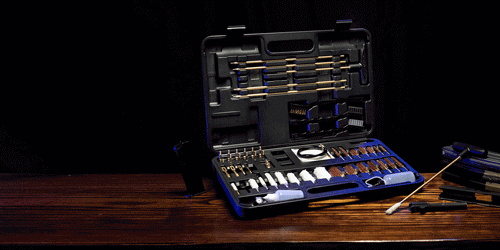
The sun was setting over the rolling hills and dense forests of the countryside, casting a golden glow over the landscape. It was the perfect time of day for rabbit hunting, and I was eager to get out into the field with my trusty Beagle and start searching for my prey.
Rabbit Hunting Gear
After acquiring a suitable firearm and partnering with a seasoned hunting buddy or skilled hunting dog, the next step is to gather the necessary gear to ensure a successful and enjoyable rabbit hunting.
Clothing&Boots
Apart from the rifle, don't forget to think about your clothing. When it comes to hunting, prioritize clothing made from technical fabrics like polyester and wool, which offer superior breathability, moisture-wicking properties, and temperature regulation to prevent overheating and discomfort.
Every state has its blaze orange laws. However, for small game hunting, I strongly advise wearing safety orange vest to minimize the risk of being mistaken for game. Besides, camouflage is a key when hunting rabbits. Wear clothing that matches the terrain and use natural cover like bushes, trees to hide and stalk your prey without being seen.
Rabbit hunting requires a lot of walking, so it's essential to wear high-quality, comfortable boots that can prevent blisters and keep your feet dry. Additionally, both your boots and clothing should provide warmth without overheating, to ensure you stay comfortable throughout the hunt.
Ethical Kill
When hunting small game like rabbits, squirrels, or birds, it's essential to prioritize a quick and humane kill. A head shot is the most ethical choice, ensuring a swift and painless death.
When hunting rabbits with a.22 caliber rifle, precision is key. Aim for the spot just below the ear and behind the eye, as this location is most likely to result in a fatal shot, given the rabbit's small brain size.
If the rabbit escapes the first shot, you could do your best to grasp the back legs with one hand and the head/neck with the other. Pull up on the legs while pulling down and back on the head to humanely dispatch the rabbit.
While the process can be uncomfortable, it's a privilege to be involved in meat production and understand the sacrifice that goes into putting food on your table.
Field Dressing the Rabbits
After hunting rabbits for your family, it's essential to field dress them as soon as possible. This ensures quick body heat loss, which prevents bacterial growth on the carcass. Additionally, it lightens the load, making the trip home easier while preserving the quality of the meat.
What You'll Need:
Sharp knife
Cutting board or clean surface
Gloves (optional)
Step-by-Step Guide:
-
Prepare the Rabbit:
Lay the rabbit on its back on a clean surface.
Ensure the rabbit is field dressed (gutted) before you begin skinning.
-
Make an Initial Cut:
Use a sharp knife to make a small incision in the skin around the hind legs. Be careful not to cut too deep into the muscle.
Cut around the feet at the ankles and make a slit along the inside of the hind legs, connecting the cuts.
-
Loosen the Skin:
After making the cut, begin peeling the skin away from the flesh. Rabbit skin is relatively loose, so it should come off easily by pulling it down toward the head.
Use your knife to help separate the skin from the body if needed, but most of the skin should peel away with your hands.
-
Remove the Skin from the Body:
Once you’ve loosened the skin from the hind legs, you can pull it down toward the head, almost like peeling off a glove.
Pull gently but firmly. The skin should come off in one piece, and you can cut it away from the body at the front legs and head if necessary.
-
Cut Off the Head and Feet:
After the skin is removed, you can cut off the feet at the ankles if you haven't already.
Remove the head by making a clean cut at the base of the skull.
-
Clean the Rabbit:
Rinse the rabbit thoroughly under cool water to remove any dirt, hair, or debris from the skinning process. Be sure to bury the entrails at least 2 to 3 feet deep to prevent attracting predators and to promote proper decomposition.
Cook the Rabbits
Before diving into recipes, it's important to understand the meat you're working with. The meat is lean, which means it can dry out quickly if overcooked, so it benefits from slow, moist cooking methods or being paired with rich sauces.
Braising is one of the best methods for cooking rabbit as it keeps the meat tender and moist. To braise, first, brown the rabbit pieces in a bit of oil in a heavy pot. Once browned, add vegetables like onions, garlic, carrots, and celery, along with broth or wine. Cover the pot and let the rabbit simmer on low heat for 1 to 2 hours, until the meat is tender and easily falls off the bone.








